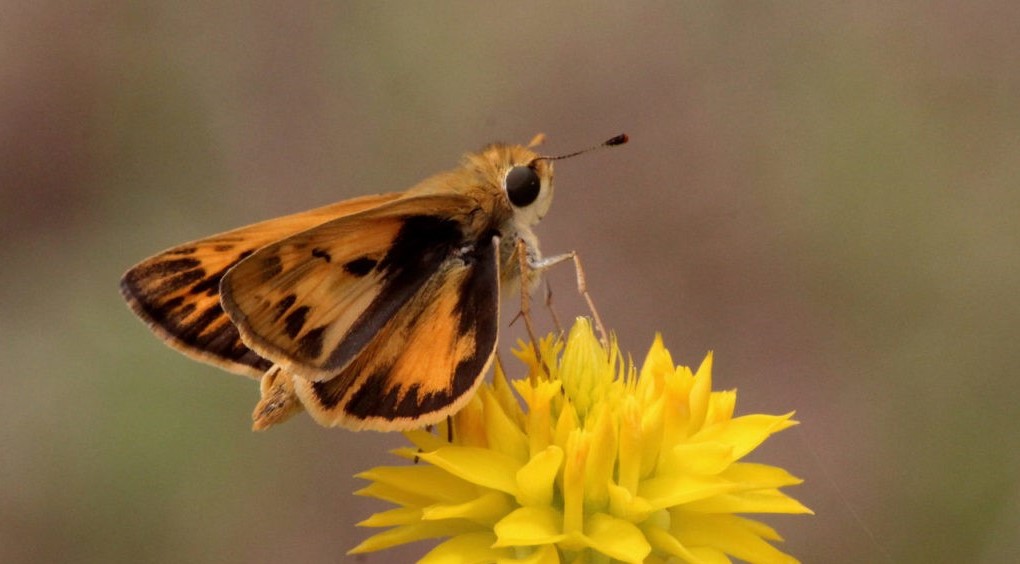Happy National Pollinator Week!
This week, we salute the little things — the pollinators that do our heavy lifting.
Why care about pollinators? Because 80 percent of our food crops depend on them, as does the health of our natural ecosystems, which we depend on for everything from carbon sequestration to… toilet paper.
Thousands of years ago, the plant kingdom began evolving and growing more diverse. Plants learned to serve up flowers as “come hither” temptations. Turns out that having a butterfly, bee or bat (or even ants) visit a flower is an ingenious way of spreading pollen from flower to flower. That leads to pollination, which results in seeds or fruit that enable the plant to efficiently reproduce.
Some plants even began specializing by adapting their flower’s structure or color to attract certain pollinator species. Cue the Earth’s dazzling assortment of original flowers. In nature, each color, shape and size serves its purpose. Some crafty plants even produce flowers that are generalists – the come-one-come-alls of the plant world. These not-so-picky flowers can be had by a variety of insects or small animals.
Pollinators in trouble
As flowers changed, so did their pollinators, diversifying for specific climates, habitats and jobs. As widespread and diverse as they are, our pollinators are, unfortunately, in trouble. We’re not just talking European honey bees. Florida alone has more than 300 species of native bees, many of which do much more pollination than honey bees. They are all having a tough time surviving, just as are birds and other animals counted on as pollinators.
Chief among the reasons they struggle is habitat loss. That new store on the corner? It snuffed out half an acre of pine trees and understory shrubs, plants and vines. Multiply that by hundreds of such daily losses here in Florida, and you’ll get an idea of what pollinators are losing.
If you like food and toilet paper (and I really hope you do), you need to help pollinators. The easiest way to do that is to add the native plants they evolved with to your landscape.
Sure, you may have flowering plants in your landscape now. But go out and take a look — are there bees, butterflies and bugs waiting in line for their nectar and pollen? Probably not. That’s because most of the flowering plants sold by mainstream nurseries have turned into ornamental darlings without purpose. They are all about their looks, manipulated by man, not nature.
Anyone for steak?
Those manipulations have taken them to a universe far, far away from the one in which they evolved with their insect partners.
Think about it this way: All his life, a farmer threw the finest hay to his horse. But one day, his feed store had a new product — hay that looked and smelled like steak. The farmer thought it was wonderful! With much excitement, he took it home and threw it to his horse. His horse looked at him like he was nuts. She wouldn’t eat until the farmer replaced it with the hay she had munched all of her life.
So, we need to give our insects (and horses) what they need. For our own sakes. Where do you start? Check out these resources:
- Going all in to change your landscape? Order a copy of Native Plants for Florida Gardens, which profiles 100 trees, shrubs, plants and vines and includes valuable pollinator info.
- No space for a garden? Put together a pollinator pot or two using advice on this page. We’ve also got helpful videos on our YouTube channel — view Create a Pollinator Pot Part I and Part II. Get to know Florida’s pollinators by visiting our Protect Pollinators page.
- Download helpful handouts and publications about wildflowers for butterflies, bees and birds.
- Here’s what you need to know about adding a bee house to your landscape.
To find a native nursery near your home, visit www.PlantRealFlorida.org. To find Florida’s native wildflower seeds, visit www.FloridaWildflowers.com.

